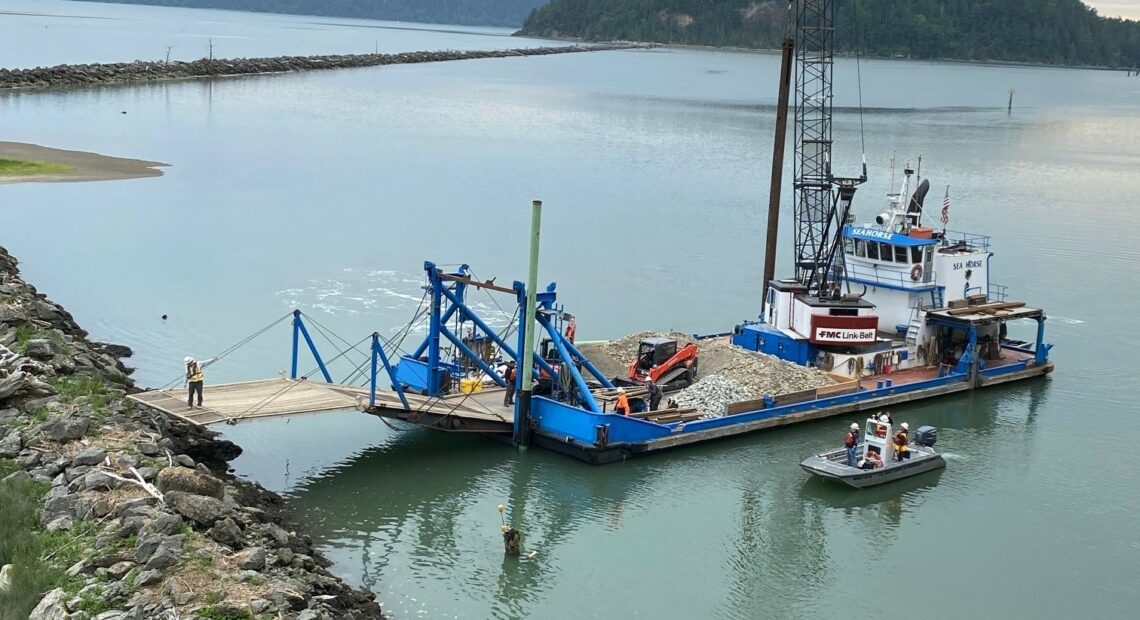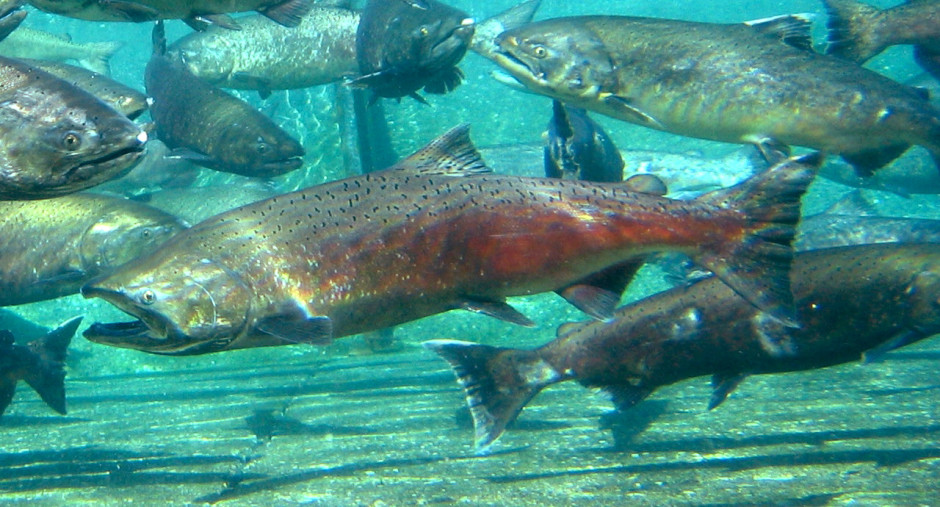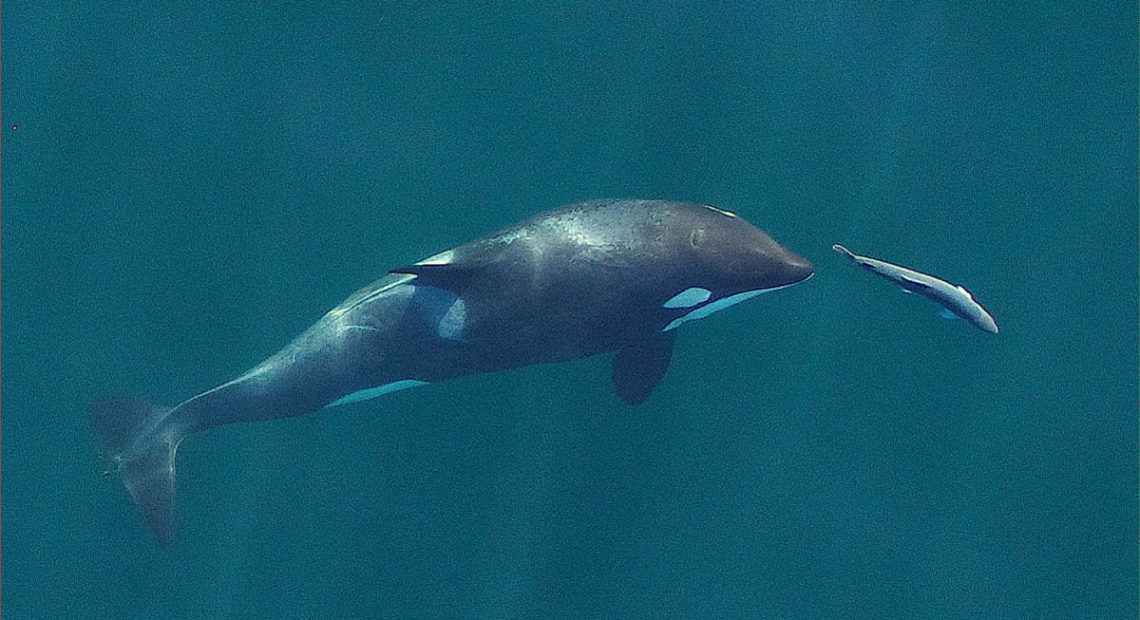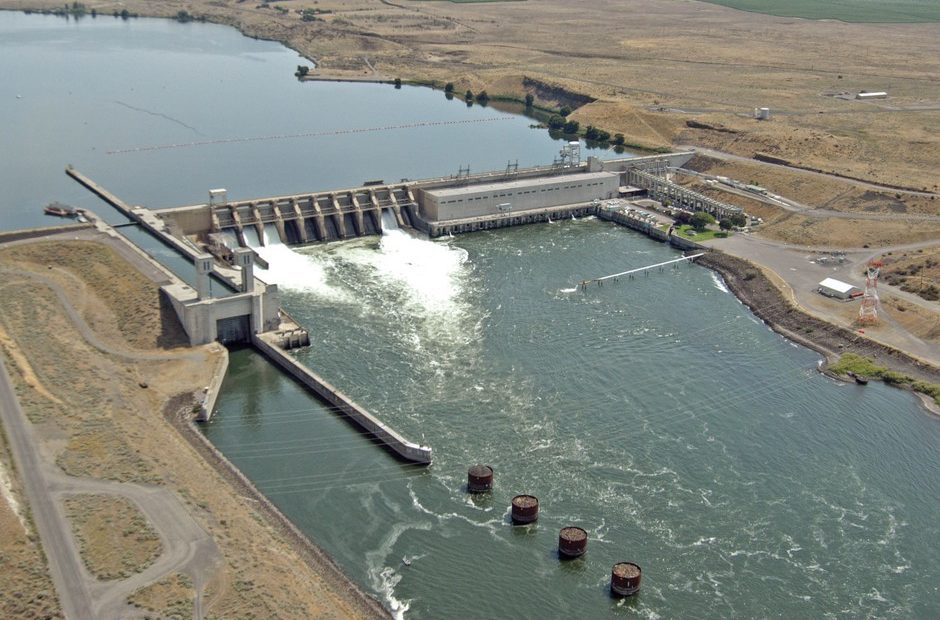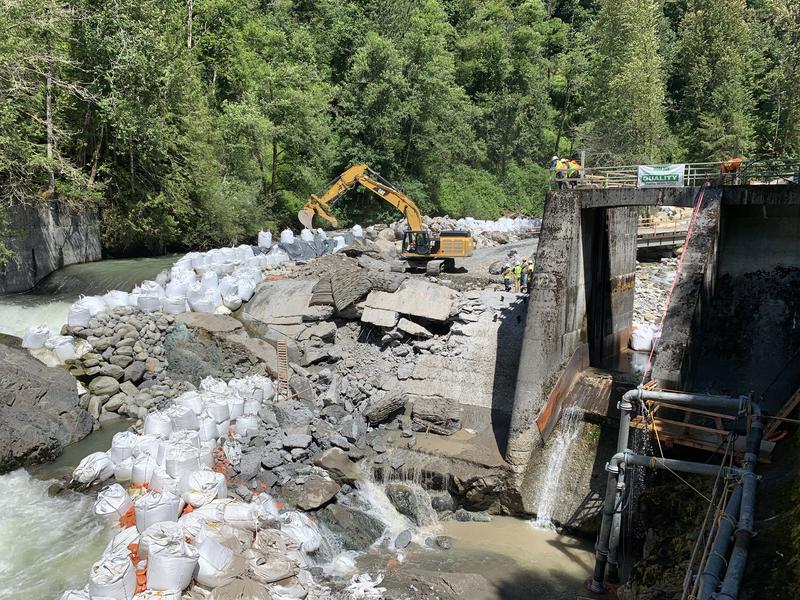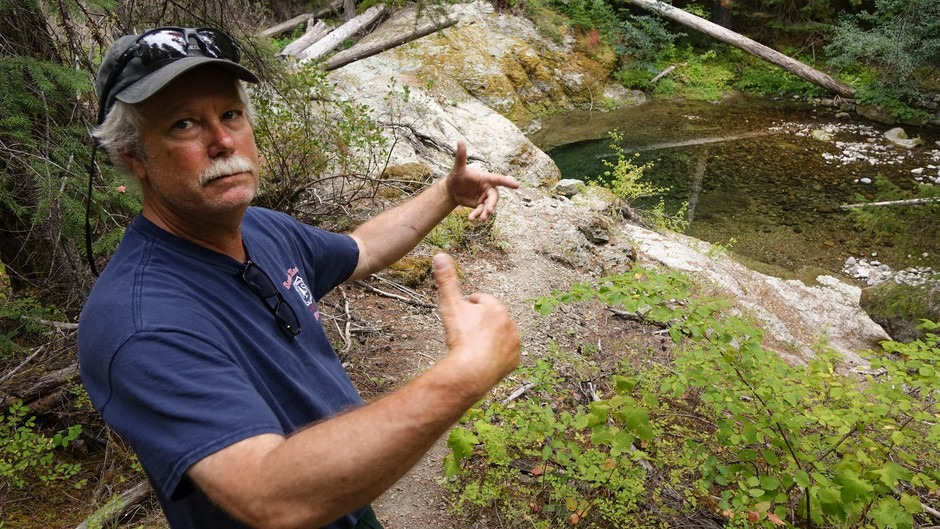The Army Corps of Engineers began emergency repair work May 22 on a jetty that sits at the mouth of the Skagit River’s North Fork, near La Conner.
Crews will use cobble and sediment to essentially plug porous areas of the McGlinn Island Jetty. Those gaps have stranded, harmed or killed out-migrating juvenile salmon this spring, according to a press release from the Read More
Salmon survive best when the water is cooler along the coast and warmer farther out. Colder La Niña conditions have also led to higher salmon counts. Right now, that’s exactly what’s happening. But things will likely change over the summer.Read More
By analyzing the DNA of orca feces as well as salmon scales and other remains after the whales have devoured the fish, the researchers demonstrated that the while the whales sometimes eat other species, including halibut, lingcod and steelhead, they depend most on Chinook. And they consumed the big salmon from a wide range of sources — from those that spawn in California's Read More
The number of chinook salmon returning to the Middle Fork of the Salmon River and its tributaries is just a tiny fraction of historic numbers, experts said. “More is better, but it’s still abysmal numbers,” said Russ Thurow, a research fisheries scientist with the U.S. Forest Service based in the small city of Salmon. “We’re bouncing around just above extinction.”Read More
Debates have dragged on for decades about whether to remove or alter the four dams. The Army Corps, Bureau of Reclamation and Bonneville Power Administration received almost 59,000 comments on the draft EIS this spring. The agencies are expected to finalize this plan by Sept. 30.Read More
A dam removal that has been 20 years in the making reached an important milestone this week. Explosives ripped through the concrete on the Middle Fork Nooksack, east of Bellingham. Read More
Recently, there’s been a significant shift in our understanding of salmon genetics. Researchers have found a distinct area in salmon DNA where the spring and fall chinook differ.Read More

